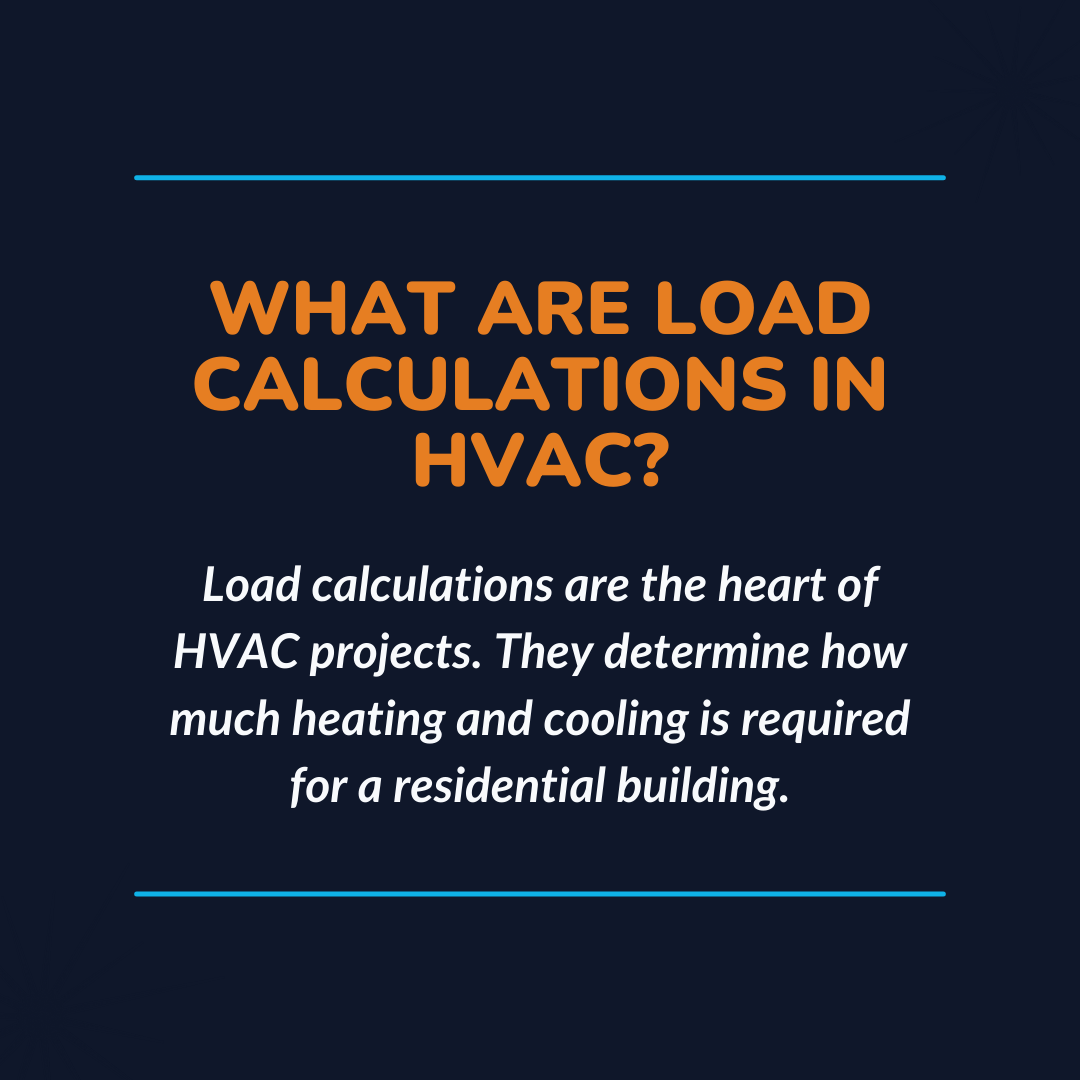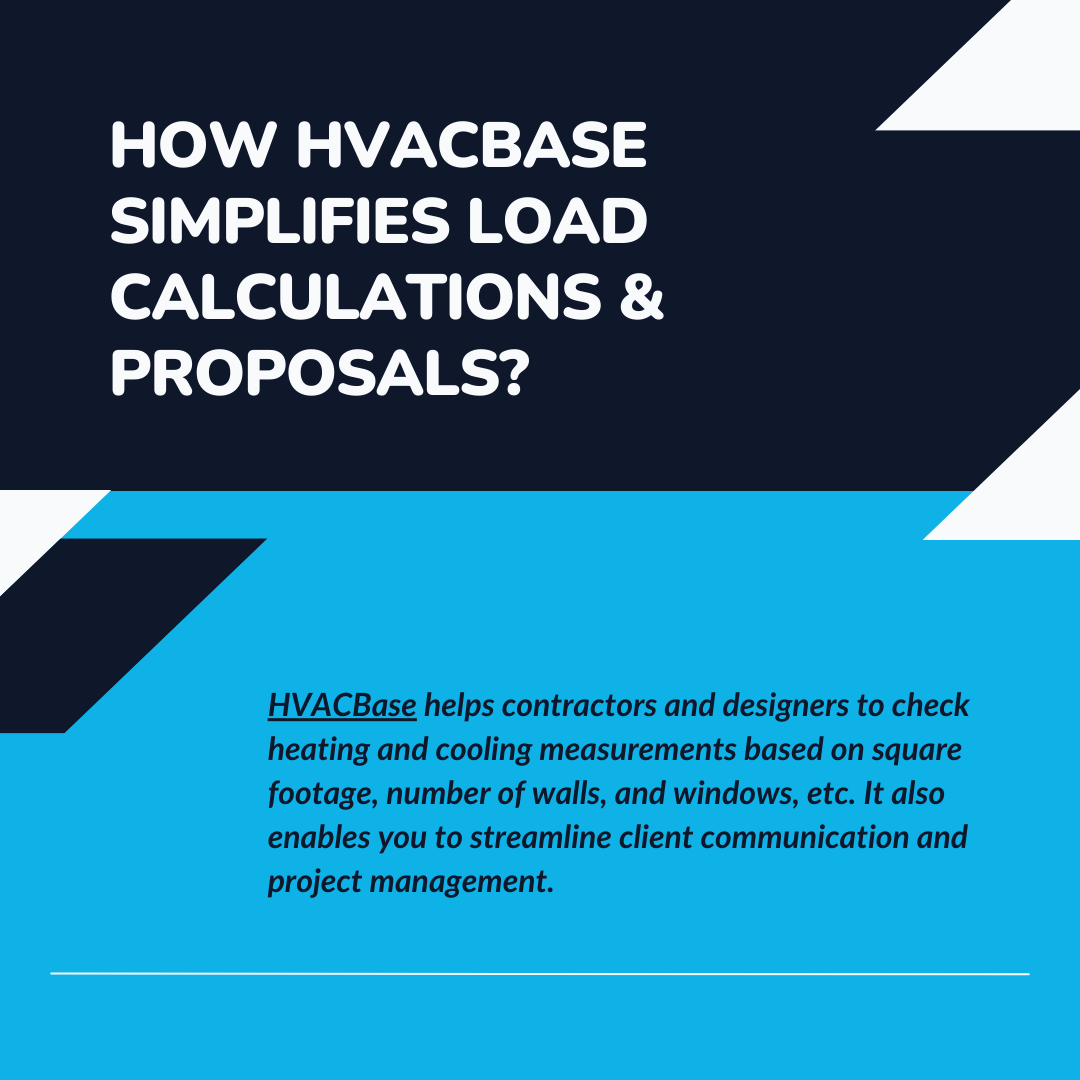Proposal & Load Calculations: Software Solutions Explained
Every HVAC contractor knows the challenge of getting load calculations just right.
One minor error in load calculations can throw off the entire design, as customers might lose confidence in your proposals, and as a result, rework increases, and callbacks for change orders waste money and time.
So, what’s the smarter way to calculate HVAC load?
An HVAC load calculator takes the guesswork out of the process. It simplifies block load calculations, eliminates manual J errors, and helps you design systems that perform perfectly the first time.
Proposal & Load Calculations: How HVAC Manual J Software Eliminates Errors
Manual J calculations are time-consuming and still prone to human error.
Even a small miscalculation can lead to oversized or undersized HVAC units- costing contractors money, time, and client trust.
Therefore, in this blog, we will study how HVAC load calculators and proposal software help with manual J residential calculation on a mobile device, with accurate values, and help in equipment selection.
Quick Insights:
- The manual calculation method is risky and wastes time on rework.
- By using the HVAC Manual J software, contractors gain fast, accurate bids along with pre-built professional templates.
- Reduced human error and automation save time on rework, allowing contractors to complete more projects and increase profitability.
- With HVACBase, you will gain clients' confidence with accuracy, speed, professionalism, and precision.
What Are Load Calculations in HVAC?

Load calculations are the heart of HVAC projects. They determine how much heating and cooling is required in a residential building.
Without precise means, measurements, and load calculations, even the best HVAC cooling equipment will underperform.
Manual J, D, and E: What Do They Mean?
- Manual J: Calculates the heating and cooling load values for home and residential buildings. It helps you calculate loads while considering common factors such as square footage, walls, windows, ceilings, and rooms.
- Manual D: It focuses on duct designs. It helps ensure that your ducts are perfectly calculated so the cooling calculations are correct and guarantee cooling throughout each space of the HVAC unit.
- Manual E: It helps you determine equipment selection. It allows the air conditioning contractors to match the right HVAC unit with manual J calculations for the best energy performance, taking into consideration other external factors such as climate changes.
Why Load Calculator Works: The Risks of Manual Calculations?

Relying on spreadsheets and manual calculations is a big disadvantage for air conditioning contractors in today's digital age. Manual calculations have a high chance of errors and delay the proposal process. Let's see how:
A. Inaccurate manual load calculations
Miscalculations often lead to either oversized or undersized load calculations. Oversized load calculations lead to more cost, while undersized HVAC load calculations lead to unsatisfied customers.
B. Missed bids and Lost Opportunity
Missed bids mean losing your customers with slower proposals. One mistake and you lose trust and delay the project delivery process.
C. More rework on changes
Miscalculations increase the time required to complete the work, and when you are on the cutting edge, it takes more time and money to implement the changes and work smoothly.
Why are Spreadsheets not considered for calculating HVAC load?
Spreadsheets were in demand, but since the new digital era, they cannot match the changing speed of accuracy and client expectations. Let us talk about it :
- Speed: Spreadsheets take hours and hours to build bids and proposals, while software does the same thing with faster results.
- Accuracy: Manual entries have chances of error, but with software, the chances of error are reduced, and no reworking is required on change orders.
- Scalability: Spreadsheets break down projects into multiple sheets, while software manages unlimited jobs with accuracy.
Read: HVAC Software vs Manual Estimation: Pros & Cons
From Site Visit to Signed Contract: The New HVAC Workflow
Modern HVAC businesses are moving toward HVAC load calculator software that integrates seamlessly with other devices and features, such as mobile-first design and comprehensive reports.
The Advantages of the Integration of the HVAC Load Calculator
The load calculator automatically stores data into the software and creates ready proposals with accurate estimates from the job site.
It lets you create quick, error-free proposals using customizable templates, mobile-first design, and access to real-time pricing, all from your device.
With faster turnaround times and accurate details, you can impress clients, speed up approvals, and close contracts before your competitors even finish their quotes.
HVAC Manual J Software: How Software Does the Math (So You Don’t Mess Up)

HVAC software helps with instant calculations and accurate data, without wasting time on guesswork or rework. Let us check how software does the math:
I. Eliminating Human Error
With automated formulas and entries, it reduces the likelihood of human error, such as miscalculations or incorrect formula usage.
Each entry follows industry standards, and then the program software delivers designs that reduce the scope of human error.
II. Speeding Up Proposal Turnaround
Instead of spending hours or days on ACCA-approved manual calculations and proposals, software saves time and speeds up the proposal process.
III. Building Customer Confidence
When clients receive proposals backed by accurate data and precise estimates, they instantly feel confident in your professionalism.
Reliable, software-generated proposals build trust, strengthen credibility, and help you win more projects with ease.
Did you know? The HVAC software market is likely to grow from USD 737.7 million in 2025 to USD 1,527.5 million by 2035, with a CAGR of 7.6%.
What To Look for in HVAC Proposal & Load Calculation Tools?

The right HVAC software must have the best calculators and design software, along with external factors such as mobile-first design, equipment selection, etc.
The best tools combine technical precision with smart automation and ease of use, helping contractors deliver faster, more accurate results.
1. Integrated manual J/D/E tools:
Software must support manual J, D, and E software for load calculations, equipment sizing, and designs. All these HVAC load calculators are crucial for HVAC projects.
2. Prebuilt proposal templates:
Look for ready-to-use, customizable templates that automatically pull data from your load calculations. This allows you to generate professional, accurate proposals in minutes- saving time, reducing errors, and helping you close deals faster.
3. Mobile first design:
A mobile-first interface and cloud-based access let contractors and teams collaborate seamlessly from anywhere- on-site or in the office, through real-time updates and synced project data.
4. Digital Signatures and Approval:
You wait for the proposal to be approved, and often it takes days, weeks, or even months. So, go for tools that support e-signatures, enabling clients to review and approve proposals instantly, keeping your sales process moving and reducing administrative friction.
5. Material and Equipment Database:
With HVAC software, you can capture all details regarding materials and equipment used for HVAC units and HVAC sites. You can access the listing and ordering of material and equipment in HVAC software with accurate quotes and estimates.
6. Smart CRM and Project Management Integration
Integration with CRM and project management tools ensures every client detail, estimate, and update stays connected. Real-time tracking, progress visibility, and automated compliance checks help teams deliver projects on time and within budget.
Check this out: What Is Manual J in HVAC & Why It Matters
Tips to Get Your Crew Comfortable with HVAC Software
For adapting to the new HAVC workflow, your team must use it confidently. Here are some tips for your team:
Tip 1: Train your team with manual J/D/E:
Train your team on Manual J residential calculations, Manual D for design, and Manual E for equipment selection for cooling and heating, so they use the correct calculators with full efficiency.
Tip 2: Use Cloud-Based systems
Use cloud-based systems for real-time collaboration between the jobsite and the office. Keep your crew and clients on schedule and up to date on the crew's performance.
Tip 3: Use prebuilt proposals & Review Proposals
Use prebuilt templates for faster proposal turnaround and review the changes so that clients get precise and updated proposals, which increases client trust.
How HVACBase Simplifies Load Calculations & Proposals?

HVACBase helps contractors and designers to check heating and cooling measurements based on square footage, number of walls, and windows, etc. It also enables you to streamline client communication and project management.
With these features, HVACBase simplifies the load calculations and proposals:
- Manual J & ASHRAE Complaint Load Calculation: It calculates HVAC load based on real building data and weather conditions for heating and cooling.
- Interactive System Design tools: You can get real-time updates on changes made to HVAC equipment system designs.
- Seamless CRM and Proposal Integration: You can choose the client's details and attach them to the proposal integration CRM, and you are good to go.
- Built-in reporting and exporting: Built-in advanced reporting features help the client and crew stay on track, and you can also download PDFs with detailed data.
- Duct and Equipment Selection and Sizing Tools: It automatically helps you with duct and equipment selection based on load calculations for full operational efficiency.
Final Thoughts: Manual Calc & Design Errors are Now Optional
Precision is the most important factor in scaling HVAC companies. With the HVAC manual J software and integrated load calculators and CRM, contractors will stop wasting hours and days on manual spreadsheets and formulas.
HVACBase helps you with accurate calculations and proposals that your client won't neglect, and you will win more HVAC projects with speed, accuracy, and precision.
Stop letting manual errors cost you projects!
Each oversized duct and miscalculation costs you money and time.
HVACBase eliminates the risk of those errors by providing accurate values, helping you scale more HVAC units and projects. Book your free demo at HVACBase today.
FAQs
Q.1 Which software is used for HVAC?
Contractors use software like HVACBase for load calculations, such as J, D, and E calculations, and to generate proposals to scale their business.
Q.2 What is manual J in HVAC?
Manual J calculates the heating and cooling load values for residential buildings based on the number of windows and walls.
Q.3 Is the J calculator free to use?
Yes, there are some online versions, but for professional proposals, contractors use the detailed versions and integrated tools.
Have questions or need personalized advice?
Talk to an Expert Today and let our construction specialists guide you to success.






